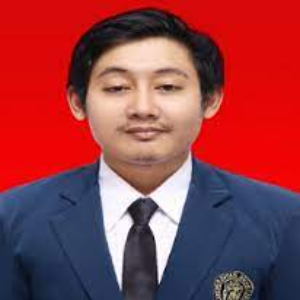Title : Using liquid omental cattle fat accelerated the healing of 3rd degree burns based on VEGF expression and epidermal skin thickness: Study inrat
Abstract:
A third-degree burn is a high severity burn characterized by the colour of the inflamed skin turn to grey until black, no bullae forming, and the surface does not feel pain anymore. The healing of the wound can be marked by the growth of epidermal layer when proliferation occurred. One of the necessary growth factors for wound healing is Vascular Endothelial Growth Factor (VEGF). The omental fat contains several growth factors such as Fibroblast Growth Factor (FGF) and VEGF. T his research aimed to know the influence of the giving of liquid omental cattle fat in the treatment of burns towards the increase of VEGF expression and the thickness of skin epidermis of Wistar rat (Rattus novergicus). This study used a complete randomized design with 20 male rats, two months old, 150-200 g with divided into four groups with five replicates. The groups are G1 (negative control), G2 (positive control, given the burns on the dorsal surface), G3 (treated with Bioplacenton® as a burn ointment), and G4 (treated using one ml liquid fat). The method for third-degree burn used fired of the metal coin (diameter one cm) during one minute then set on the dorsal skin of anaesthetized rats in 1 minute. After the burning, one mL of normal saline swept to the surface, continued giving the treatment and the bandage (Melolin®) covered burn area. Ethical clearance of this research was approved by the Research Ethics Committee of Universitas Brawijaya with number certificate No. 928-KEPUB. The burn ointment and liquid fat were delivered every two days respectively and coincided replacing the dressing. Omental cattle fats were obtained from cattle slaughtering house of Malang then continued sterilization using Autoclave. The lipids were heated five minutes until become liquid then aspirated 1 mL by syringe, and sensed by hand into warm before treatment application. After 14 days of treatment, rats were euthanized, and the skins were collected into 4% formaldehyde. T he sample was processed being tissue embedded paraffin. The VEGF area expression observed by Immunohistochemistry method continued measuring with ImmunoRatio while the epidermis thickness measured in Hematoxyline-Eosine (HE) stained tissue. Data were analyzed quantitatively using One Way ANOVA p <0,05 via SPSS ver 25. Results showed that liquid omental cattle fat increased VEGF area expression (36,28±1,39%) and epidermal thickness (17,7 ±1,62 µm) significantly (p<0.05) compared positive control (17,08±2,46% and 13,92 ±0,82 µm, respectively) and burn ointment groups (19,97±1,79% and 14,44 ± 1,23 µm, respectively). The acceleration of skin regeneration due to growth factors component from omental fat as leading regeneration. The conclusion was that the liquid omental cattle fat could hasten the regeneration of the skin toward 3rd level burn injury based on the elevation of VEGF and epidermal thickness. The researchers acknowledged to Ministry of Higher Education for funding this research with Student Creativity Program.



